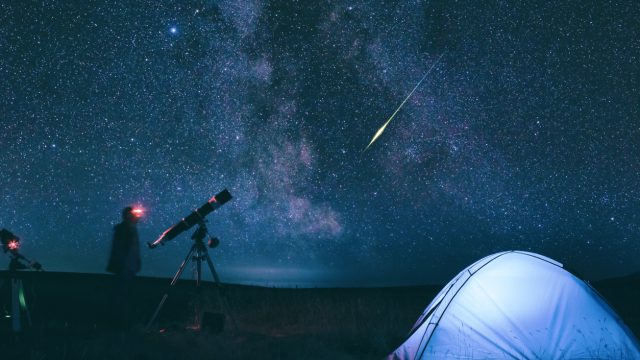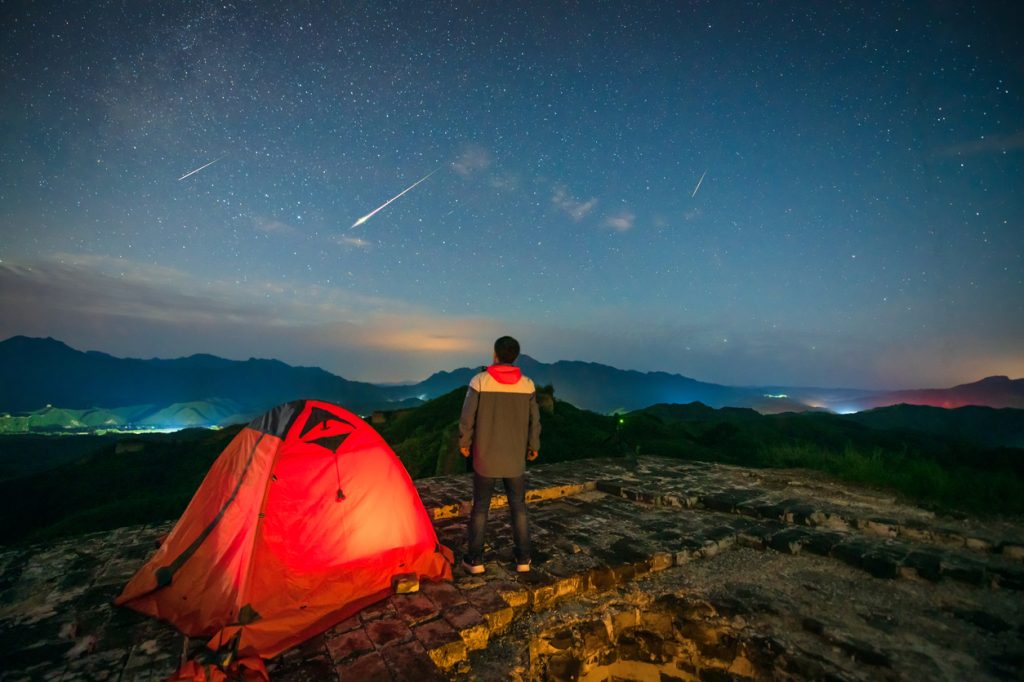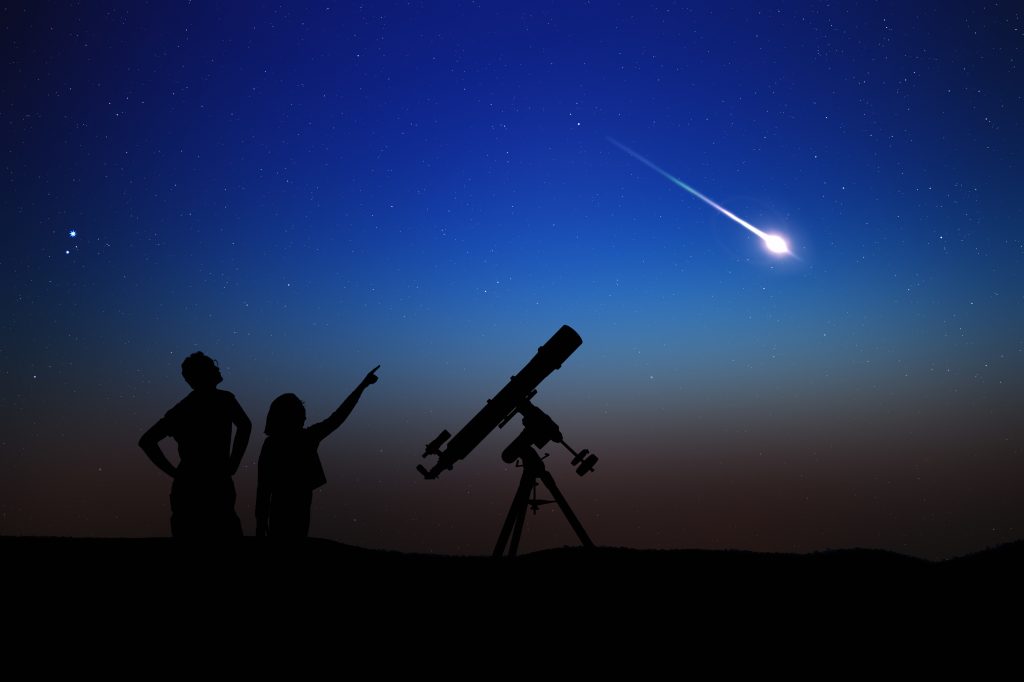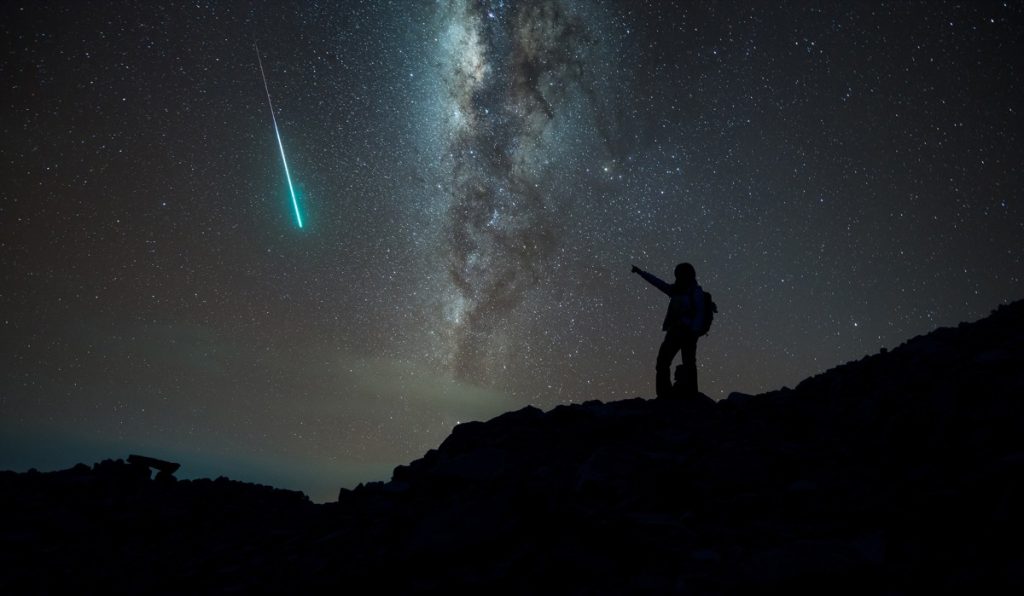“Best Meteor Shower of the Year” Will Light Up the Sky This Weekend—How to See It

Even though the sky can be a pretty impressive sight on any given day of the week, it’s always fun to catch an awe-inspiring and anticipated celestial event. Whether it’s a special eclipse, lunar phenomenon, or series of shooting stars, the experience can be memorably great when conditions are just right. But some annual occurrences on the calendar still stand out as must-see events. And this weekend, the “best meteor shower of the year” will light up the sky in a dazzling display. Read on for more on how you can see the show for yourself.
RELATED: NASA Says Solar Eruptions Are Increasing—Here’s How That Could Affect Us.
The Perseid meteor shower will create “fireballs” and “explosions of light and color” this weekend.

Summer is prime season for many amateur astronomers, both because of warmer weather that makes viewing more comfortable and the number of major celestial events that happen to take place. But this weekend, the Perseids will peak in a stunning display that NASA calls “the best meteor shower of the year.”
The highly anticipated annual event is created by the Earth passing through the dust trail of comet 109P/Swift-Tuttle, which orbits the sun once every 133 years and last came through the inner solar system in 1992, according to the space agency. As the tiny particles enter our atmosphere and begin to fall toward the ground, they burn up and create the stunning spectacle sometimes referred to as “shooting stars.”
The Perseids’ stellar reputation comes in part from how active it is, with many years seeing an average of up to 100 meteors per hour, according to NASA. But the “shooting stars” it produces are also uniquely vivid and captivating, often creating long, bright, and colorful “wakes” and dazzling fireballs that are “larger explosions of light and color that can persist longer than an average meteor streak.”
RELATED: A Special Solar Eclipse Will Create a “Ring of Fire” in the U.S.—Here’s How to See It.
One significant difference could make this year’s Perseid meteor shower even better than usual.

While many people make it a point to catch the Perseids every year, those who go outside to get a glimpse will likely get an even better view than usual. That’s because this year will see the shower’s peak falling on a night with a slim waning crescent moon that’s only 8 percent illuminated, Space.com reports.
The reduced glare will make it much easier to catch the full brilliance of meteors, which can otherwise appear fainter due to the increased magnitude. Conditions will also be improved because the moon won’t rise until very late into the evening, closer to sunrise, around 3 a.m.
“Compared to last year when the moon was full, this year is going to be great,” Bill Cooke, lead scientist with NASA’s Meteoroid Environment Office, told Insider.
RELATED: 8 Amazing Things You Can See in the Night Sky Without a Telescope.
The Perseids will reach their peak this Saturday evening through early Sunday morning.

If you’re hoping to catch the Perseids at their most active, you might want to clear out any evening plans you have for this coming weekend. The show is set to reach its peak in the early morning hours of Aug. 13 at around 4 a.m. EDT, making Saturday night and pre-dawn Sunday the ideal viewing window, according to Space.com.
Besides this year’s improved visual conditions, Cooke says the Perseids are worth catching because they really only compare to one other meteor shower all year long.
“The difference is the Perseids occur on a nice, warm summer’s night. The Geminids are mid-December, and you freeze your tail off,” Cooke told Insider.
RELATED: For more up-to-date information, sign up for our daily newsletter.
Get comfortable and prepare yourself for a potentially late night.

If you’re already booked through the weekend, you can still make time to catch some of the Perseids: The show will wind down while still producing visible meteors for the rest of the month. But regardless of when you’re planning on stargazing, there are a few tips to always keep in mind to make sure you have the best experience possible.
Just like the moon can drown out other celestial objects, light pollution from bright cities and streetlights can make it much harder to get a great view of the action. Once you’ve settled in, you’ll still need close to 30 minutes for your eyes to fully adjust to the darkness—which makes it equally important to refrain from looking at your phone’s bright screen, according to NASA.
It’s also a good idea to look at your local weather forecast, which can determine if weather conditions will allow for viewing and help you figure out how to dress comfortably for the temperature. It’s best to bring along a blanket or chair that will enable you to recline and look above.
“Just lie back with your eyes and take in the sky, and you’ll see Perseids zip along the sky,” Cooke told Insider.